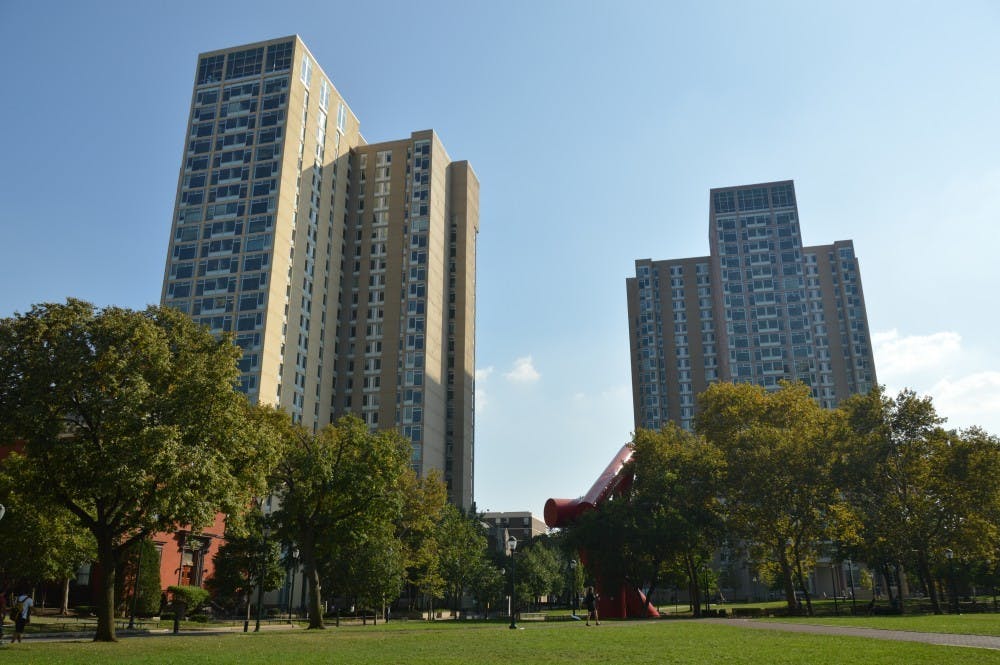The relationship between art and academia is oftentimes uneasy. University–based art teaching is comparable to scientific research, where craft and technique are subordinate to formal analysis and critical theory. But art doesn’t have to be intellectualized or institutionalized. At Penn, students like Jenn, Hadeel, and Faith all do art on their own time, allowing it to permeate their lives. This is the kind of engagement the arts program in the college houses aims to support: to imbue the arts into daily life.
Residential programs are described as “living environments” that provide “an opportunity to live with students and faculty who share a passion for a particular subject." Among these are the College House Music Program that brings professional performances and master classes to Penn, Film Culture in Gregory that hosts faculty discussions, Front Row Theater and the Arts in Harrison, Music and Social Change in Fisher that “investigates how music is used to construct culture”, Arts Collective in Rodin, and Arts House in Harnwell.
According to its description, the Arts Collective “aims to provide engagement–based opportunities for students to appreciate and analyze various types of art (music, theatre, and visual arts) with a community of their peers, supplementing their curricular education at Penn.” What this means is the residential program essentially tries to draw students of the arts to apply to their hall in order to cultivate an arts community. The annual Rodin showcases presents an opportunity for people to come together to display what they’ve done.
Similarly, the Arts House is organized to bring together a creative community, organizing workshops and activities from First Friday gallery openings to Drawing Workshops to its own annual showcase to feature residents’ work. They’re meant to “challenge residents to be more than consumers of the arts.” Residents here are also welcome to come up with their own activities to do with their hall. For example, at the beginning of the year, Kathryn Wang (C’20) hosted a canvas painting study break at the beginning of the year. It was this sense of camaraderie between artists that she had hoped to find when applying to Arts House.
The scene in Harrison is little more different, with residential theater and art groups taking over such that they are tasked with bringing the entertainment into the high rises. The Front Row Theater is an actual theater company on campus, centering around socially relevant theater. Each semester, they perform in the Harrison Rooftop Lounge, which they characterize as “an incredibly intimate space that gives FTC the freedom to explore different types of theater experiences.” Harrison is also home to Penn Art Club’s monthly “Art–Ins,” where arts and crafting workshops are open to all. Though not formally organized by the College House, House Dean Frank Pellicone nevertheless describes such a connection to the high rise as a “great chance for students to socialize and release stress.”
But as much as these programs seem good in theory, the realities of the programs, as many other residential programs, are very different. Because the high rises are generally populated by upperclassmen, Kathryn says that the goal of a community “seems to be hard because upperclassmen don’t really care about meeting new people as much. Everyone has his/her different groups.”
Not too surprising given that it is Penn, where nearly everyone is involved with seven different clubs. In fact, in the last Arts House showcase, only about a dozen or so students were showcased at all. But Adam Bailey, the Graduate Advisor of the Arts House program explains it as “when we talk about students taking the time out on a Sunday afternoon when they’re already involved in so many things, it doesn’t look bad.”
So maybe the residential programs are not the best places to foster large communities of arts groups. But this shouldn’t be a setback in creating smaller groups. For example, in the Arts House, because many of the students are interested in creating music together, they can come together for even as small an event as a jam session. Just last weekend, a group of four students went to a jazz show. “The number is not large, but for those four students, it was a meaningful, worthwhile experience,” Adam relates.
The arts programs in the Houses can’t reach everyone. They create events and space for students to come, but it’s up to the students to open their doors. Love for art and creating doesn’t require a degree or professional seriousness. Not even creativity. In some sense, a community comes first, and that’s what the arts programs in the high rises do.

